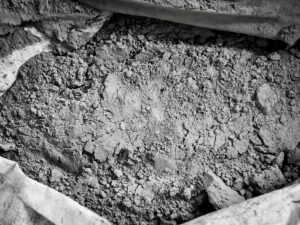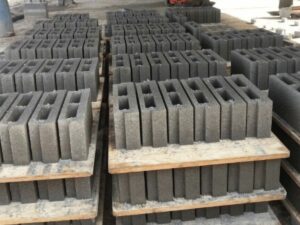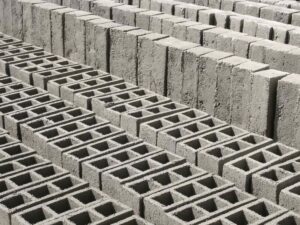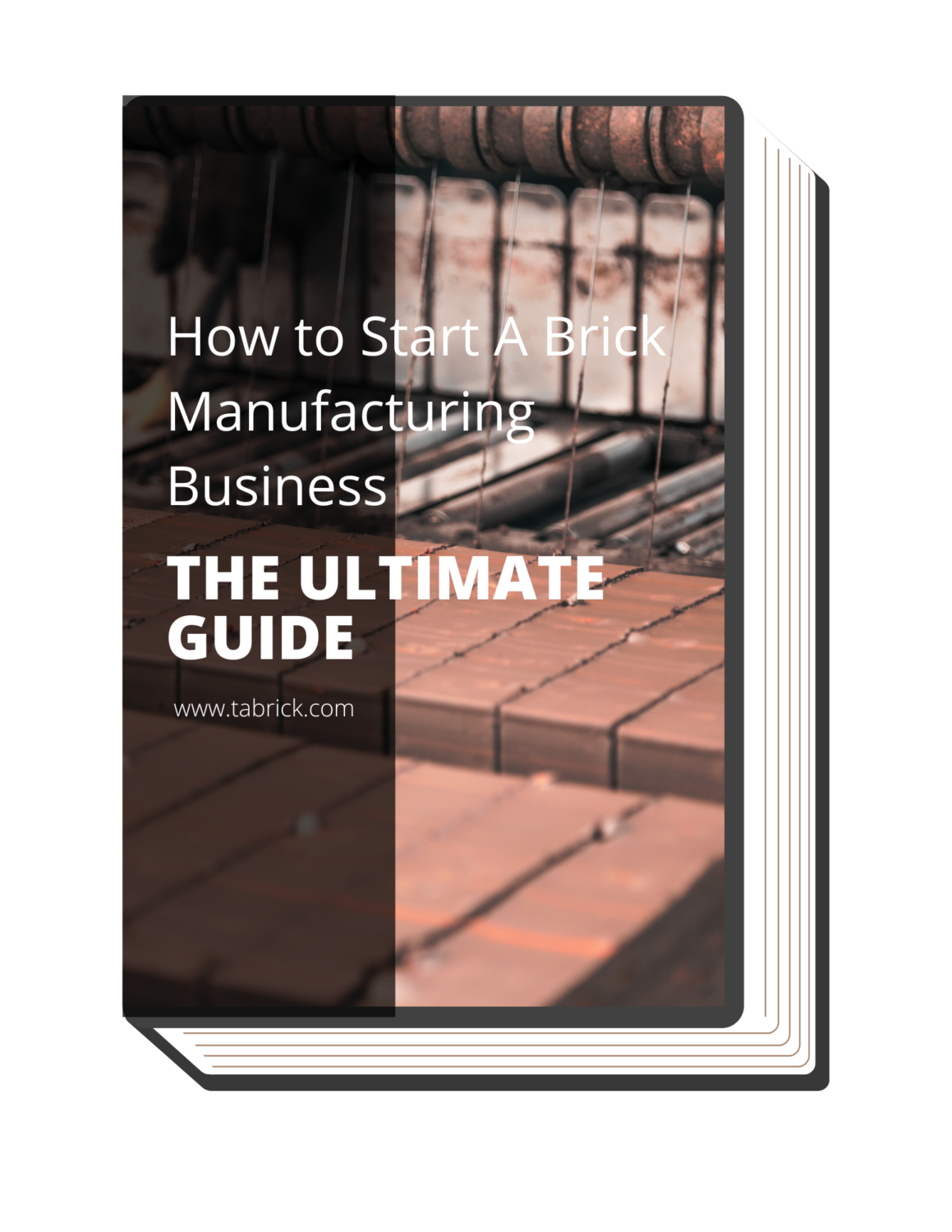Are you in the hollow block-making industry and looking to produce high-quality and durable blocks? Look no further than our step-by-step guide to the manufacturing of hollow blocks. From raw material selection to packaging and transport, we’ll take you through every critical step to ensure your final product meets the required standards.
As per Grandview research, the global hollow concrete blocks market continues to grow at a compound annual growth rate (CAGR) of 5.2% from 2023 to 2030. At Tabrick, we value and prioritize partnerships, quality control, and customer satisfaction. Our guide promises to equip you with the knowledge and tools you need to succeed in this competitive industry.
Let’s dig more and learn how to improve your hollow block manufacturing process.
Step#1 Raw Material Selection
Attention all blockheads! The secret to crafting top-notch hollow blocks, like those produced with a fly ash brick machine, lies in selecting the perfect raw materials. I have found that it’s essential to source raw materials from trusted suppliers who have a reputation for providing high-quality products. At Tabrick, we use a blend of cement, sand, water, and aggregate to achieve the ideal strength and durability.
The Building Blocks
Selecting the ideal materials is crucial for the longevity and performance of your hollow blocks. For instance, using cement with the right fineness and consistency ensures a strong bond with other ingredients. Poor quality materials can lead to weak blocks that may not stand up to the test of time.
Highlights:
- Allows for customization of the final product according to client requirements.
- Cost savings may result from wise raw material selection.
- Ensures the production of high-quality products.
Challenges:
- Sourcing high-quality raw materials can be difficult due to regional availability and cost variations.
- Ensuring a consistent supply of raw materials to meet production demands.
- The use of alternative raw materials, such as fly ash or recycled materials, may require additional research and testing to achieve desired block properties.

Step#2 Mixing of Raw Materials
Next up, let’s mix things up! Combining the raw materials may seem like a piece of cake, but it’s essential to achieve the perfect consistency. Too dry, and your blocks might crumble like grandma’s cookies. Too wet, and they’ll be as wobbly as jelly.
Striking the Balance in Mixing
Achieving the right mixture of raw materials is vital for the blocks’ structural integrity. A well-balanced mix of cement, sand, water, and aggregates ensures strength and durability. For example, the right water-to-cement ratio is crucial in preventing cracks and maintaining workability during the molding process.
Highlights:
- Allows for uniform distribution of raw materials.
- It helps to ensure the consistency of the final product.
- Can increase the end product’s resiliency and strength.
Challenges:
- Achieving the right proportion and consistency of the raw material mixture is crucial for optimal block strength and quality.
- Efficiently mixing large volumes of raw materials requires specialized equipment and expertise.
- Variability in raw material properties can lead to inconsistencies in the mixture, affecting block quality.

Step#3 Block Molding
Now that our mixture is ready, it’s time to put the “mold” in molding. Using specialized molds, the blocks will be shaped to perfection. It’s like a game of Tetris, but with real-life building materials! Remember, consistency is essential, so be sure to use the same mold for each block to avoid any structural surprises down the line.
The Art of Hollow Block Molding
Molding hollow blocks requires precision and consistency. Using specialized molds and vibration techniques can ensure uniformity and prevent air pockets within the blocks. In my experience, ensuring the block molding machine is properly calibrated and maintained is important to prevent defects and ensure that the blocks are of the required size and shape.
Highlights:
- Allows for the efficient production of a large number of blocks.
- Can be customized to produce blocks of different shapes and sizes.
- Can help to reduce production costs.
Challenges:
- Ensuring precise dimensions and consistent quality for each block requires accurate and well-maintained molds.
- Manual molding can be labor-intensive and time-consuming, limiting production capacity.
- The use of automated or semi-automated machines for molding can be expensive and may require specialized training for operators.
Step#4 Curing
Time to kick back and relax! Well, at least for the blocks. Curing is the process of letting the blocks rest in a controlled environment to reach their optimal strength. It’s like a spa day for your hollow blocks! In fact, this is typically done in a curing chamber where the hollow blocks thus hardened are cured in a curing yard to permit complete moisturization for at least 21 days.
Relax and Unwind
After the blocks have been molded, they need to be cured. By maintaining a controlled environment with the right temperature and humidity, the hydration process in the cement is optimized. An example of a curing method is water curing, where the blocks are submerged or sprayed with water for a specific duration.
Highlights:
- Allows for the blocks to harden and gain strength over time.
- Helps to improve the longevity and robustness of the final product.
- Can be done using environmentally friendly methods.
Challenges:
- Proper curing conditions, such as temperature and humidity, are critical to achieve maximum block strength.
- Insufficient or inconsistent curing can lead to weaker blocks, reducing their structural integrity.
- Providing enough space for curing large volumes of blocks while maintaining ideal conditions can be a logistical challenge.

Step#5 Drying and Stacking
Once your blocks have had their beauty sleep, it’s time for some sunbathing. This is usually done in a designated area that is protected from the elements. The blocks should be stacked in a way that allows air to circulate freely around them, which can help to prevent moisture buildup.
Sun’s Out, Blocks Out
Proper drying and stacking of hollow blocks are essential in preventing damage and ensuring product quality. Drying techniques, such as air drying or kiln drying, can be employed depending on the specific needs of your operation. Stacking the blocks in an organized manner helps prevent chipping and maintains their structural integrity.
Highlights:
- Allows for the blocks to dry and harden properly.
- Ecologically sound techniques can be used.
- Helps to prevent moisture buildup, which can impact the final product quality.
Challenges:
- Drying blocks under a roof and away from direct sunlight is essential to maintain their strength.
- Efficiently stacking blocks without causing damage or compromising their quality can be difficult.
- Adequate space and proper organization are necessary for the effective drying and storage of large quantities of blocks.

Step#6 Quality Control
We know you’re eager to start using your freshly minted hollow blocks, but first, let’s put them through their paces! From weight to dimensions, every aspect is scrutinized to guarantee a top-quality product. A research study says that fly ash brick machine manufacturers understand that quality control plays a significant role because the quality of these ingredients and their production process could affect the overall quality of buildings to a higher extent.
No Block Left Behind
Tabrick believes that a rigorous quality control process is essential in maintaining customer satisfaction and brand reputation. Conducting regular tests, such as compression tests and dimensional checks, can help ensure that each block meets the required standards. After all, nobody wants a block party that ends in disaster!
Highlights:
- Ensures that the final product meets the required standards.
- Helps to identify defects and other quality issues early on.
- This can lead to improved customer satisfaction and loyalty.
Challenges:
- Implementing a comprehensive quality control system requires trained personnel, testing equipment, and strict adherence to standards.
- Detecting and addressing quality issues early in the production process can be challenging.
- Ensuring consistent quality across all blocks produced, especially with manual processes, can be difficult to achieve.
The following table outlines various aspects of quality control for hollow blocks, highlighting the importance of thorough testing and inspection to ensure top-quality products for construction purposes.
| Aspect |
Importance |
Activities |
| Weight |
High |
Weighing each block to ensure it falls within the specified weight range. |
| Dimensions |
High |
Measuring the length, width, and height of blocks to ensure they meet the required dimensions. |
| Compression Strength |
High |
Conducting compression tests to determine the block’s strength and resistance to pressure. |
| Defects |
Medium |
Visual inspection to identify any visible defects or imperfections in the blocks. |
| Density |
Medium |
Measuring the density of blocks to ensure they have the appropriate weight-to-volume ratio. |
| Moisture Content |
Medium |
Checking the moisture content to prevent blocks from cracking or deteriorating over time. |
| Curing |
Low |
Verifying that the blocks have been adequately cured to achieve the desired strength. |
| Durability |
Low |
Assessing the blocks’ ability to withstand external factors such as weathering and impact. |
| Thermal Conductivity |
Low |
Measuring the blocks’ ability to conduct heat to ensure energy efficiency in buildings. |
| Sound Insulation |
Low |
Evaluating the blocks’ ability to block sound transmission and provide acoustic insulation. |
Step#7 Packaging and Transport
Last but not least, it’s time to send your hollow blocks out into the world. Tabrick takes pride in its efficient packaging and transport solutions, ensuring that each block arrives safe and sound at its destination. So, whether you’re building a skyscraper or a humble abode, you can rest assured that your hollow blocks will be there when you need them!
Destination Block Made Easy
Efficient packaging and transport solutions are crucial in delivering your hollow blocks to clients without any damage. Employing suitable packaging materials, such as wooden pallets or shrink wrap, can protect the blocks during transit. Collaborating with reliable logistics partners can ensure the timely and safe delivery of your products.
Highlights:
- Protects the final product from damage during transport.
- Helps to ensure that the final product arrives at the client’s location in good condition.
- It is modifiable to accommodate the particular needs of the customer.
Challenges:
- Choosing appropriate packaging materials to protect blocks during transport and handling can be challenging.
- The weight and size of concrete hollow blocks can make transportation costly and require specialized vehicles.
- Coordinating efficient delivery schedules to meet customer demands while minimizing transportation costs.
Dive Deeper Into Our Resources
Looking for more diverse product options? Browse through our handpicked selections:
For some insightful reads, we’ve curated a list of recommended articles just for you:
Still haven’t found what you’re looking for? Don’t hesitate to contact us. We’re available around the clock to assist you.
Conclusion
In the manufacturing process of hollow blocks, there are crucial steps that require careful attention to produce durable and high-quality blocks. Each step we provide plays a vital role in ensuring that the final product meets the necessary standards. To excel in the hollow block making industry, it’s vital to prioritize quality control and customer satisfaction.
At Tabrick, we implement rigorous quality control measures and provide exceptional customer service to achieve these goals. We’re committed to providing you with top-quality hollow blocks that will meet your needs. So, if you’re in need of high-quality hollow blocks, we’re the ideal partner for you. You can contact us today to learn more about our products and services, and let us help you achieve your goals.




